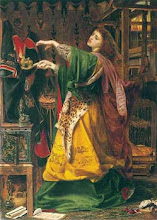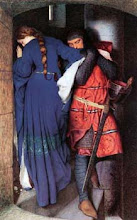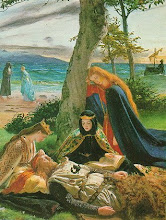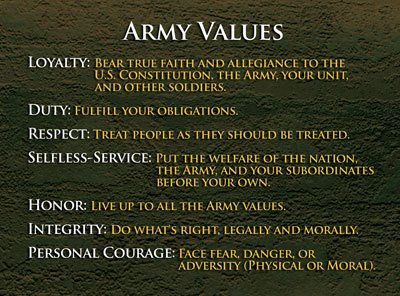In the antiquity, people did not obtain to explain the phenomena of the nature, through scientific explanations, however, created the myths, whose purpose was to give sensible the things of the world and the life. The myths also served as a form to pass knowledge and to alert to the people about dangerous or defects and qualities of the human being. Therefore, it has, a difference between legend and myth, while legends look for to give explanations to the mysterious events or supernatural things, the myth, consists in a strict symbolic component of narration.On the other hand, it fits to unmask the archetypal figure of the dragon, called “the divine serpent”, which brings the mark of the "uruboros", being about the primordial cohesion of the unconscious one, symbolized by the circle, the egg, the ocean, the divine serpent, mandala and the first essence that the alchemycal “uroboros” appraises. Being thus, the fertile womb of the Great Mother is expressed through the images of the day, the sea, the source, the land and the cave. In this period of training, it would correspond to the rejourney of the child in the maternal womb, the death and the birth have fight every night, and the existence before and after the death is identical. However,it corresponds to the incestuous union between Arthur and Morgan his half-sister verifying that in the Celtic Tradition it could be interpreted not aslike an “incestuous delivery” but a 'delivery' or 'offer' to the Great Mother. Therefore Morgan/Morgana, drift of the celtic word morgans that it means “fairies of the water” or "daughters of the sea". Thus, I perceive, that the “uroboros” and its sovereignty is strictly on the matriarcal question, or either, the matriarchy while been psychic, associates to the land and absolutely relationed to unconscious nature, in contraposition of the culture.In turn, the child “rising I” is presented however as vulnerable, however as accompanying to the Holy Ghost of the Great Mother, as loving its, detainer of an existence not properly individual, but ritualistic. The occurrence of the removal of the parents (in the direction of the child disconnect itself of them), after whom properly the world appears, the conscience and the culture if oppose. The moving on of “conscientious I” from the unconscious one is express for archetypal of the fight. The separation of the parents that occurs to the son is analogous to the fight with the dragon. Anyway, “I” if it becomes the hero as first personality, that if he bases as the archetypal precursor of the humanity as a whole.The reasons of the fight against the dragon and the fights against the monsters and the sorcerers occupy an important place in the story of the magic. Thus, the basic facts of the heroes result in the attainment from the Ctonic world, of cultural or natural objects, in the construction of the human world, as prohibited of the cosmos, constituted against the forces of the chaos and as defence of state-tribe.Thus, Vladimir I. Propp (2006) has arrived to interpret the story of the magic as clarifying myth of the iniciatic rite or neophyte. The initiation implies in the temporary of the community, contacts with other demonic worlds and its inhabitants, painful provations, temporary death and subsequent resurrection. In addition, it fits to point out the alegoric present in Arthur’s Death, the 'death' of Arthur is an alegoric personificated in the speech, and fits to emphasize a dealing associated to a visible neophyte rite, which can assign as a Triad. This triad unfolds in:
1/ The conception of Arthur through the magic;
2/ Arthur himself becomes King when he is is fifteen years old, pulling a sword of the stone, Excalibur, the “Sword of the power” that also its forges is supernatural;
3/ the love-affair triangle that involves Arthur, Guinevere and Lancelot and consequently breakdown the kingdom of Camelot and culminates in tragedy;
4/ The present ambiguity in the 'death' of Arthur, a death that does not exist body, estimating the resurrection and the return of only King Arthur to govern Britain. Constructed this triad, I explain that number three is sacred and perfect, represents the sides of a triangle representing the beginning, the middle and ending.Being this base, it is the Holy Ghost in principle, whichever represents the Son, the return to the community, it is the Holy Trinity, it is the sign of the return and the purification of the inner forms. It fits to remember that this triad produces what Gilbert Durand (1988) defines as mythlogems of the imaginary, whichever are mythical redundances in determined culture, motifs that are replaced through the times. Being thus, Gilbert Durand considers four mythlogems:
1/ The founder hero;
2/ The seek for the impossible, in the medieval narratives, treating itself to find the “paradise lost”, in Arthurian myth would be the Isle of Avalon or 'Island of the Apple-trees', that in the Malory's book is placed in the quagmires of Glastonbury, such as, this intertext sends us to the 'Fortunate Island' as shown in Greek mythology;
3/ The occult rescuer;
4/ The transubstanciation or transmutation, the 'wait' for a body, hope for a king, the death/ressurrection of Arthur, in which fulfills to the prophecy who Sir Thomas Malory said: “King Arthur was King and he will always be King”.The myth emphasizes the subject of the death as necessity of 'changings' and transformations of state. In truth, the death does not exist and the iniciatic death purposes moralize. In this way, conserving the nucleus of the archetypal image of the hero, the chivalry romance not only “civilizes it”, but it opens to the Epic hero an “inner content” to the “special” man.



































0 comments:
Post a Comment